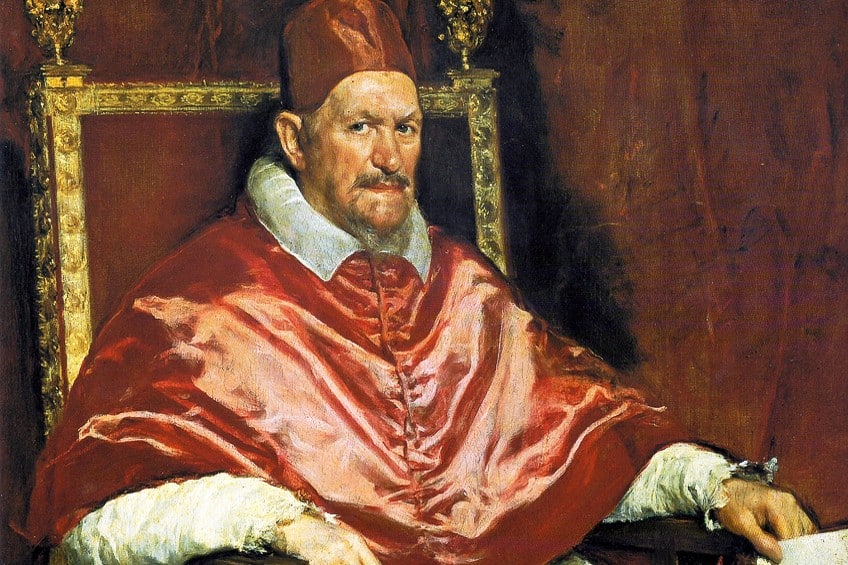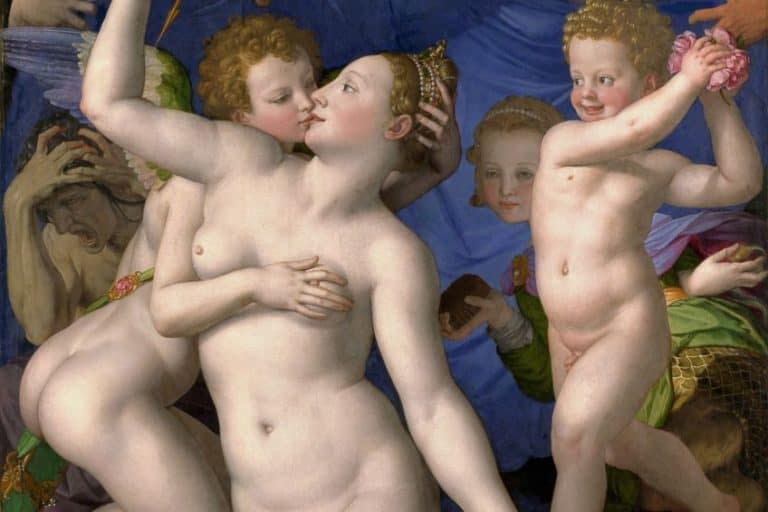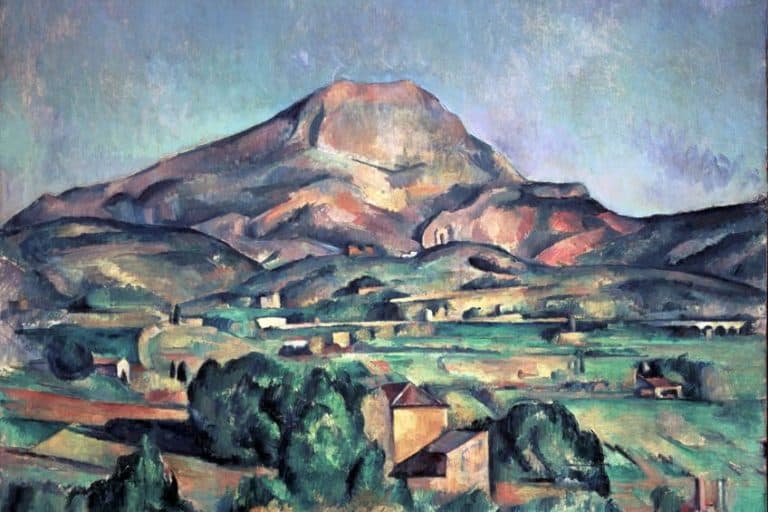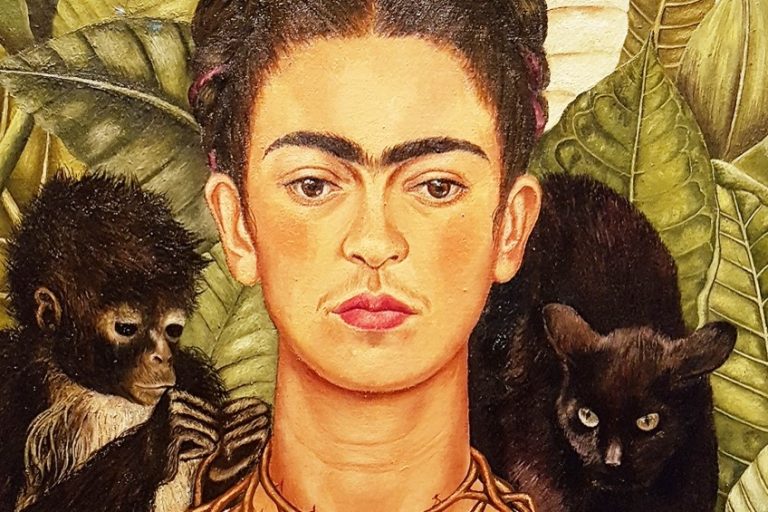Famous Paintings in Rome – The Top 10 Iconic Roman Artworks
To the emperors of Rome, this ancient city was regarded as the center of the world, or “Caput Mundi”. With a history that spans back more than 3000 years, it is not surprising that there are so many examples of famous paintings in Rome. With so much art to see in Rome, it can be difficult to decide what Roman paintings and which Roman artists you should explore. This article shall find out more about which famous art in Rome that is worth seeing with our list of the best of Rome’s artworks!
Table of Contents
- 1 Our List of the Most Famous Paintings in Rome
- 1.1 Young Woman with Unicorn (1506) by Raphael
- 1.2 The Virgin and Child (1510) by Giovanni Bellini
- 1.3 Leda and the Swan (1510) by Followers of Leonardo da Vinci
- 1.4 Sacred and Profane Love (1514) by Titian
- 1.5 Amor and Psyche (1589) by Zucchi Jacopo
- 1.6 Jupiter, Neptune and Pluto (1597) by Caravaggio
- 1.7 Self-Portrait at a Mature Age (1635) by Gian Lorenzo Bernini
- 1.8 Portrait of Innocent X (1650) by Diego Velázquez
- 1.9 The Portrait of a Man (1693) by Parmigianino
- 1.10 The Three Ages of Woman (1905) by Gustav Klimt
- 2 Frequently Asked Questions
Our List of the Most Famous Paintings in Rome
Some of the Western world’s greatest powers have called Rome home over the centuries. The city’s galleries, cathedrals, and piazzas are today filled with the incredible cultural and artistic treasures that they left behind. Rome has so much to offer visitors, with some opting to take in the ambiance and beauty by strolling around the historic ruins, magnificent boulevards, and lush gardens of the city, while others focus on the famous art in Rome. The city of Rome’s artwork is some of the most renowned in the world, with many famous Roman artists being highly-accomplished and renowned individuals. By examining our list below, you will have a better idea of what art to see in Rome when visiting the city.
Young Woman with Unicorn (1506) by Raphael
| Artist | Raphael (1493 – 1520) |
| Date Completed | 1506 |
| Medium | Oil on canvas |
| Dimensions (cm) | 67 x 56 |
| Location | Borghese Gallery, Rome, Italy |
Raphael appears to have drawn influence from Da Vinci’s masterwork, the Mona Lisa. However, since its inception in the early 16th century, there has been significant speculation about the identity of the young woman. In fact, academics assumed it had been created by someone else as late as the 18th century. The lady was represented as Catherine of Alexandria at the time. It is uncertain who the original woman was; some say it was Julia Farnese because one of the Farnese family’s insignia was a unicorn; others believe it was Maddalena Strozzi.
The artwork was restored in 1934, when the painters removed a part of the repainted color, and they discovered the original unicorn beneath the section with a Catherine wheel.
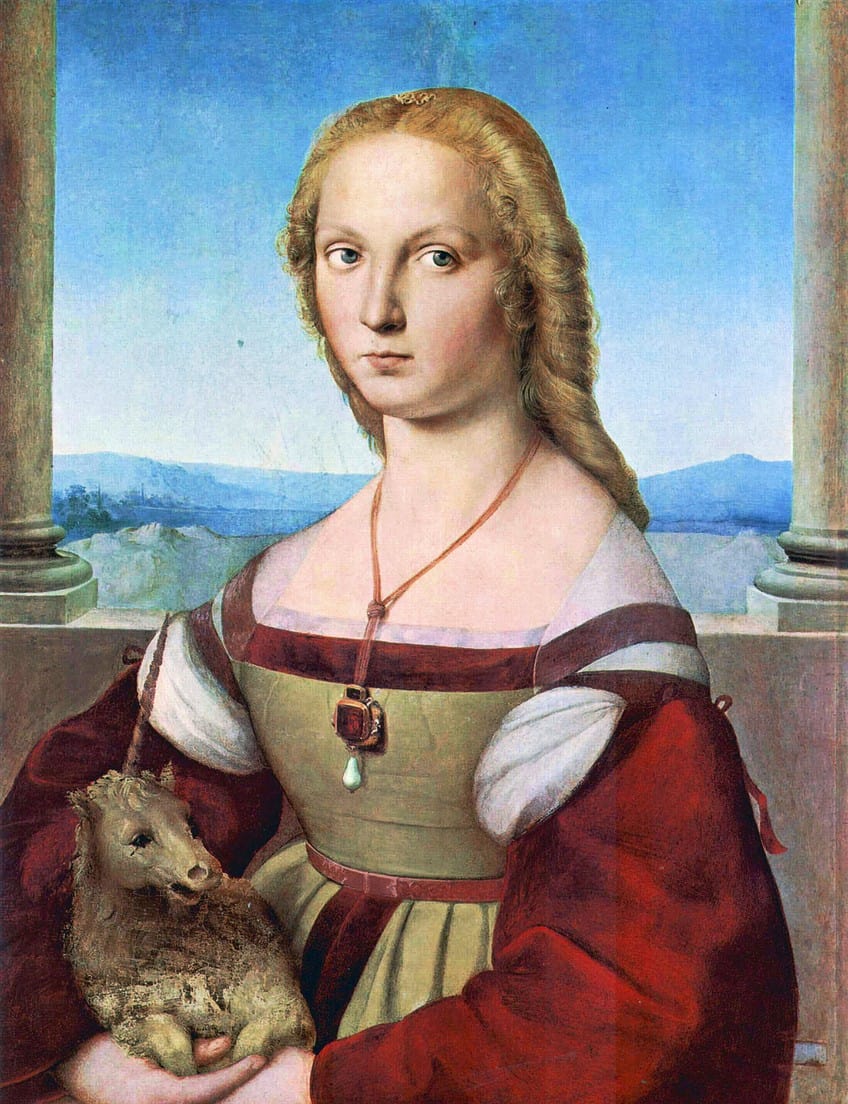
Later, in 1959, a little dog was discovered beneath the unicorn. While it is now recognized that the peculiar artwork was created by Raphael, it was previously believed to have been created by Perugino. Furthermore, it appears that at least one artist added their own touch to it throughout time. According to legend, a subsequent owner of the artwork prohibited the unicorn, a legendary creature, and had an anonymous artist paint over it.
The Virgin and Child (1510) by Giovanni Bellini
| Artist | Giovanni Bellini (1430 – 1516) |
| Date Completed | 1510 |
| Medium | Oil on canvas |
| Dimensions (cm) | 50 x 41 |
| Location | Borghese Gallery, Rome, Italy |
Giovanni Bellini was almost 80 years old when he made this artwork. Furthermore, at the time, the artist was regarded as one of the most prominent Venetian Renaissance artists. The pose of the Virgin, with her left hand cradling the Child and her right palm beneath his foot, appears in two previous works by the artist. One of them is the curtain that separates the outside world from the holy place where the Mother is absorbed by her Child.
The landscape is accented by several minutely drawn figures that borrow from his father, Jacopo’s, late Gothic heritage.
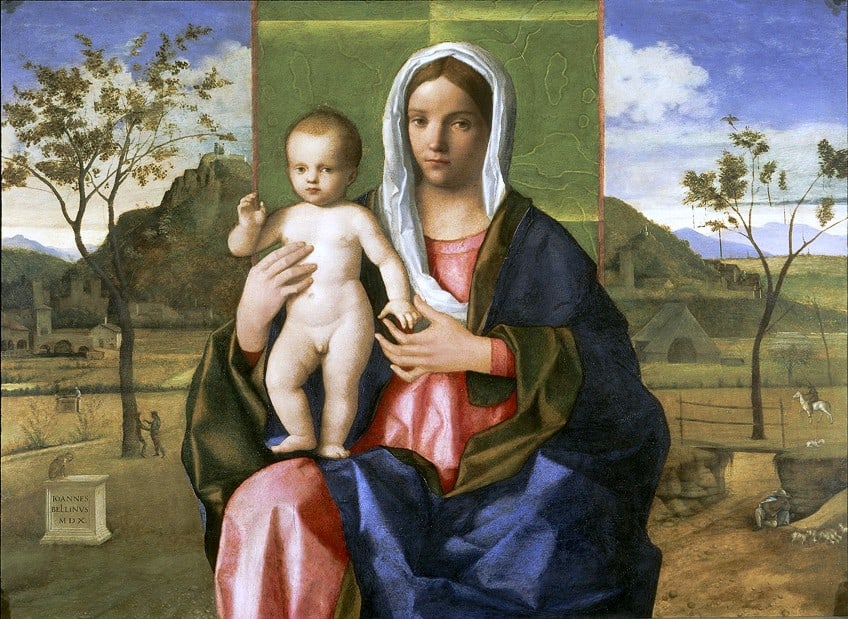
Leda and the Swan (1510) by Followers of Leonardo da Vinci
| Artist | Followers of Leonardo da Vinci |
| Date Completed | 1510 |
| Medium | Tempera on panel |
| Dimensions (cm) | 115 x 86 |
| Location | Borghese Gallery, Rome, Italy |
Leonardo da Vinci composed two pieces based on the fable of Leda and the Swan. Unfortunately, neither has survived as Da Vinci paintings, but there are various sketches for him and oil reproductions, particularly of the second composition, in which Leda stands. By the 18th century, the artwork was entirely lost. However, a few details remain to provide an accurate representation of how it would have appeared.
According to legend, Castor and Pollux, two brothers of Dioscura, were produced from the coupling of Leda and Jupiter masquerading as a swan, as portrayed on the left as youngsters, while the egg situated behind them foreshadows the future birth of Clytemnestra and Helen.

There was still a caricature of Leonardo da Vinci’s original work in the early years of the 18th century. There are a total of nine known variations of Da Vinci’s Leda, including the panel in the Borghese Gallery, which is a replica of the original work.
Sacred and Profane Love (1514) by Titian
| Artist | Titian (1490 – 1576) |
| Date Completed | 1514 |
| Medium | Oil on canvas |
| Dimensions (cm) | 118 x 279 |
| Location | Borghese Gallery, Rome, Italy |
Two ladies, who seem to be designed after the same sitter, are seated on a carved Ancient Roman tomb transformed into a water trough, or a trough designed to replicate a Roman sarcophagus; the broad ledges here are not seen in authentic sarcophagi. The water enters through a phallic-looking brass spout between the two ladies, adjacent to an antiquated coat of arms in the carving, yet it exits through a phallic-looking brass spout between the two women. This belonged to Niccol Aurelio, whose presence in the image is most likely also indicated by the spout.
Between the two ladies is a little winged child, who could be Cupid or simply a putto. He’s staring at the water and splashing his hand in it.
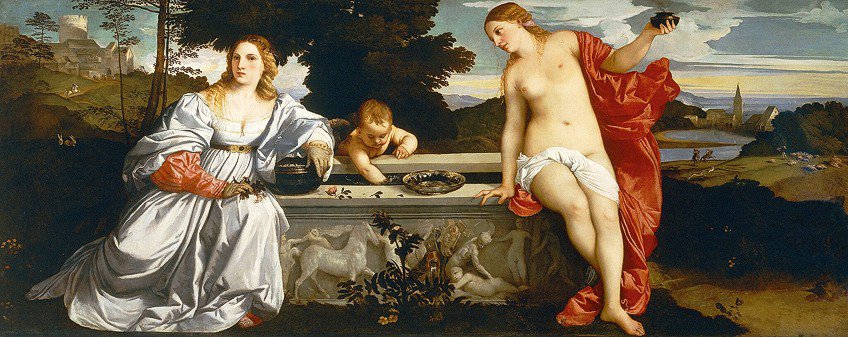
The woman on the left is completely and lavishly clothed; her clothing is now often identified as those of a bride, but they were formerly thought to be characteristic of courtesan apparel. Myrtle, a flower holy to Venus and popular among brides, is worn in her hair. The lady on the right, on the other hand, is naked except for a white fabric over her loins and a huge red mantle draped over one shoulder.
Amor and Psyche (1589) by Zucchi Jacopo
| Artist | Zucchi Jacopo (1541 – 1590) |
| Date Completed | 1589 |
| Medium | Oil on canvas |
| Dimensions (cm) | 173 x 130 |
| Location | Borghese Gallery, Rome, Italy |
The commissioning of this painting – the only artwork dated and signed by the artist – is most likely linked to Christina of Lorraine and Ferdinand I de’ Medici’s wedding in 1589 in Florence. The execution date – visible on the quiver at the bottom right – and the real significance of the piece, as well as the commission being handed to Jacopo Zucchi, a painter with intimate relations to the Medici prince for whom he had done numerous works during his tenure in Rome, corroborate this notion.
The artwork shows the pivotal moment in Apuleius’ Cupid and Psyche story, when the maiden, driven by fascination and pushed by the wicked sisters, decides to discover the identity of the mystery lover who meets her every day at dusk without disclosing his face.
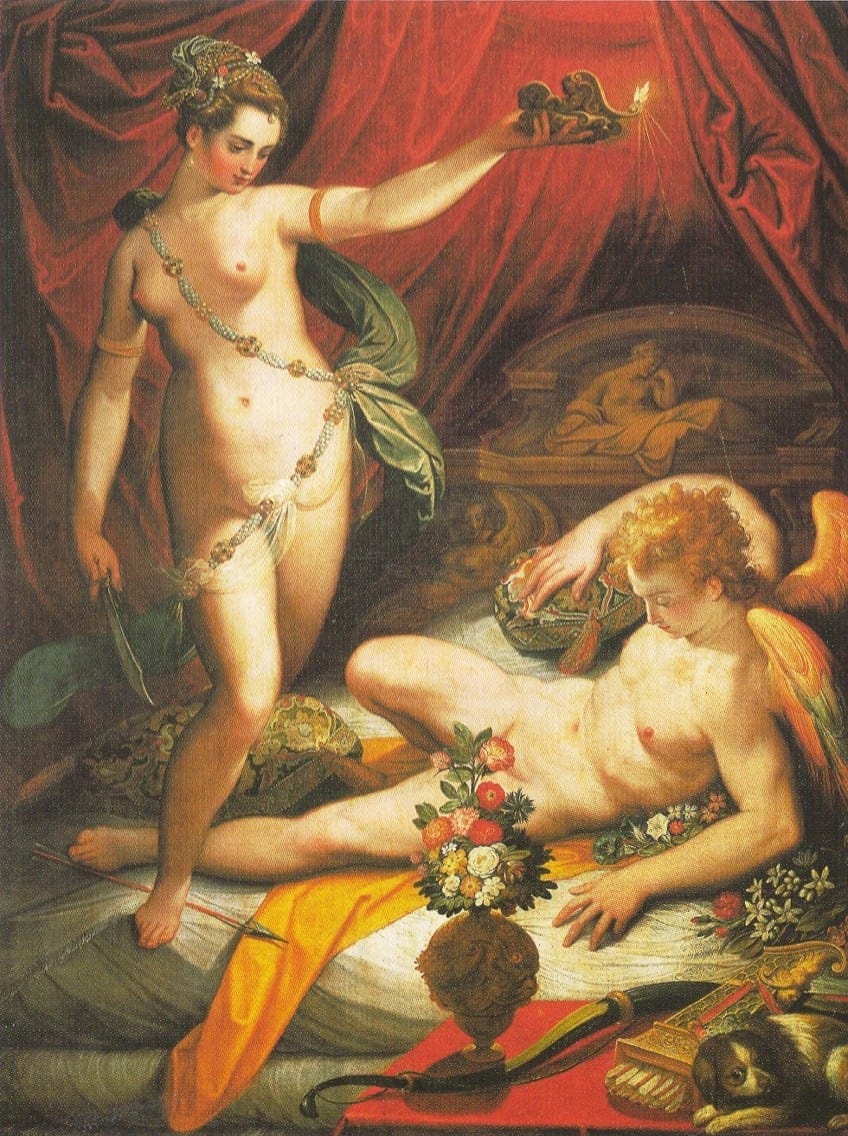
Zucchi was well-known for his portrayals of legendary figures. With this artwork, he demonstrates that he is a sophisticated artist of his time, drawing on Michelangelo alongside other Tuscan sculptors of the time, in addition to the Nordic tradition in regards to the attention to detail in such details as the jewelry, flowers, and fabrics, which he often created with the assistance of his brother Francesco.
Jupiter, Neptune and Pluto (1597) by Caravaggio
| Artist | Caravaggio (1571 – 1610) |
| Date Completed | 1597 |
| Medium | Oil on chalk |
| Dimensions (cm) | 300 x 180 |
| Location | Villa Ludovisi, Rome, Italy |
This painting was overlooked until 1969 when it was found by an Italian historian and critical opinion on it is still split. On the 26th of November, 1596, Cardinal del Monte purchased the home and moved in a month later. Caravaggio most likely painted the ceiling in the months that followed. In 1621, the cardinal sold the home to the Ludovisi family, who rebuilt and redecorated it. Cardinal del Monte’s main laboratory was located at the Palazzo Madama.
This room in the estate was most likely his private study, where he could have been more inclined to let his protégé try his first, and, as it ended up being, only ceiling painting.

The perspective effects, which lack any architectural reference inside the picture, are ambitious yet not surprising in a daring effort by a confident young artist. Perhaps the cardinal’s brother Guidobaldo, who produced a notable dissertation on perspective, assisted Caravaggio.
Self-Portrait at a Mature Age (1635) by Gian Lorenzo Bernini
| Artist | Gian Lorenzo Bernini (1598 – 1680) |
| Date Completed | 1635 |
| Medium | Oil on canvas |
| Dimensions (cm) | 53 x 42 |
| Location | Borghese Gallery, Rome, Italy |
Bernini’s three-quarters position in this self-portrait is a mirror image of his Self-Portrait as a Young Man, however, his attitude seems to have changed. While his face is becoming thinner and showing indications of aging, his hair is receding somewhat, he has minor creases on his forehead, and he has distinct circles under his eyes. As a result, 10 years later, his expression has become more composed.
As with the previous two portraits, the background, white shirt collar, and black outer garments are represented with only a few brushstrokes, giving the artwork a sketch-like aspect.
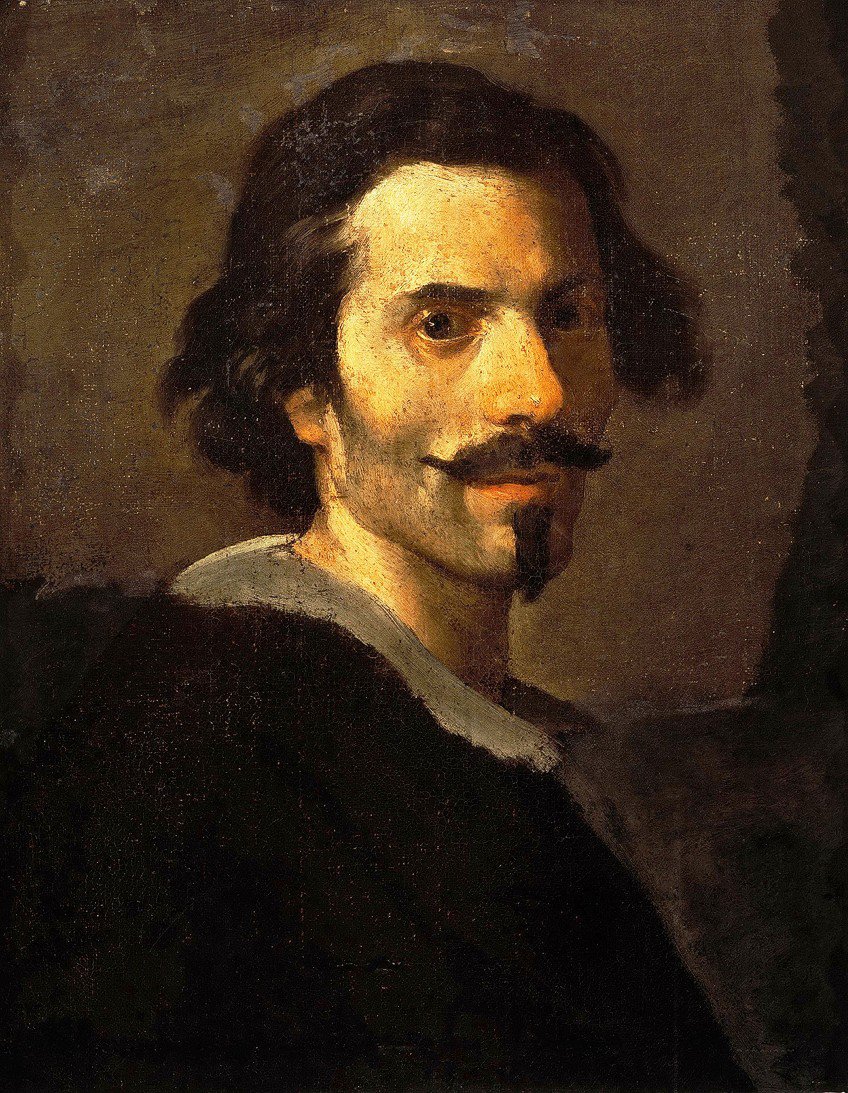
However, the artist has once again focused on the face, avoiding elements that would distract him or the spectator. Baron Otto Messinger produced the current portrait as part of a gift in 1911. Baron Messinger’s collection included many pictures of the Chigi, as well as another Bernini self-portrait, implying that the Messinger’s collection originally belonged to the Chigi family.
Portrait of Innocent X (1650) by Diego Velázquez
| Artist | Diego Velázquez (1599 – 1660) |
| Date Completed | 1650 |
| Medium | Oil on canvas |
| Dimensions (cm) | 141 x 119 |
| Location | Doria Pamphili Gallery, Rome, Italy |
In the early 17th century, Diego Velazquez was regarded as a significant contributor to Baroque art in Spain and a prominent artist of Philip IV of Spain’s court. In contrast to his colleagues’ idealistic Baroque art, such as the works created by artists such as Poussin and Rubens, Velazquez is most known for the realism of his Roman paintings. Although his realism was not as contentious as Caravaggio’s, Velazquez depicted the world around him as he saw it instead of inventing elaborate allegorical imagery. As a result, his portraiture is renowned for its emphasis on the sitter’s unromanticized features.
The most well-known of all portraits of popes, Velazquez’s painting of Pope Innocent X is an intriguing examination of the mentality and psychology of the Catholic Church’s spiritual leader.
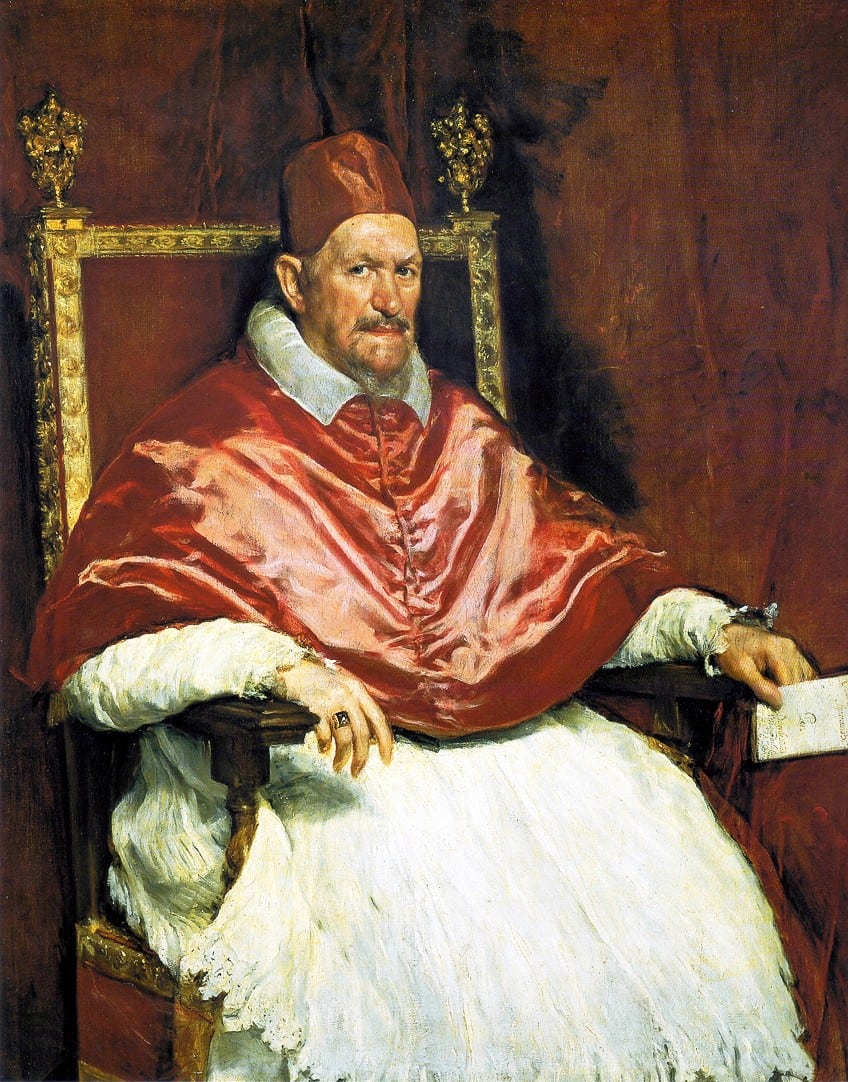
The painting was completed during the artist’s second tour to Italy, most likely in the summer of 1650, and solidified his position as one of the finest 17th-century portrait painters. It appears that Velazquez made the promise to paint the portrait at an appointment with the Pope in 1650, most likely in order to win membership to Rome’s famed Academy of Art.
The Portrait of a Man (1693) by Parmigianino
| Artist | Parmigianino (1503 – 1540) |
| Date Completed | 1693 |
| Medium | Oil on canvas |
| Dimensions (cm) | 58 x 46 |
| Location | Borghese Gallery, Rome, Italy |
This painting, which has three surviving copies, is thought to be a self-portrait, as documented by an inscription on the back. The subject’s face does not match other reliably authenticated self-portraits of the artist, therefore later art historians like Fagiolo dell’Arco and Ghidiglia Quintavalle disregarded this attribution.
There is no concrete proof for either identification, however, it might be a Parmigianino portrait of Bonifacio Gozzadino, who was referred to by Vasari, or it could be one of an unidentified Bolognese nobleman.

P. Rossi and Freedberg have defended the inscription’s validity more recently. The figure is shown frontally, with his eyes oriented to the viewer and his torso slightly tilted to the left. The beam of light that lights the face with a beard and brown hair brightens the dark background in the center.
The Three Ages of Woman (1905) by Gustav Klimt
| Artist | Gustav Klimt (1862 – 1918) |
| Date Completed | 1905 |
| Medium | Oil on canvas |
| Dimensions (cm) | 180 x 180 |
| Location | Galleria Nazionale d’Arte Moderna, Rome, Italy |
The Three Ages of Woman, painted by Gustav Klimt, the Austrian symbolist artist in 1905, has been in the Galleria Nazionale d’Arte Moderna’s permanent collection in Rome since 1912 and is one of only a few Klimt works in Italy. The artwork earned a gold medal in an international art show in Rome in 1911 to commemorate the 50th anniversary of Italy’s union. The Italian government then acquired it to add to the collection of the country’s contemporary art gallery, which had relocated to its current location in Valle Giulia the same year.
The artwork represents Klimt’s allegorical and symbolic work and was done in the artist’s latter career after he died in 1918.
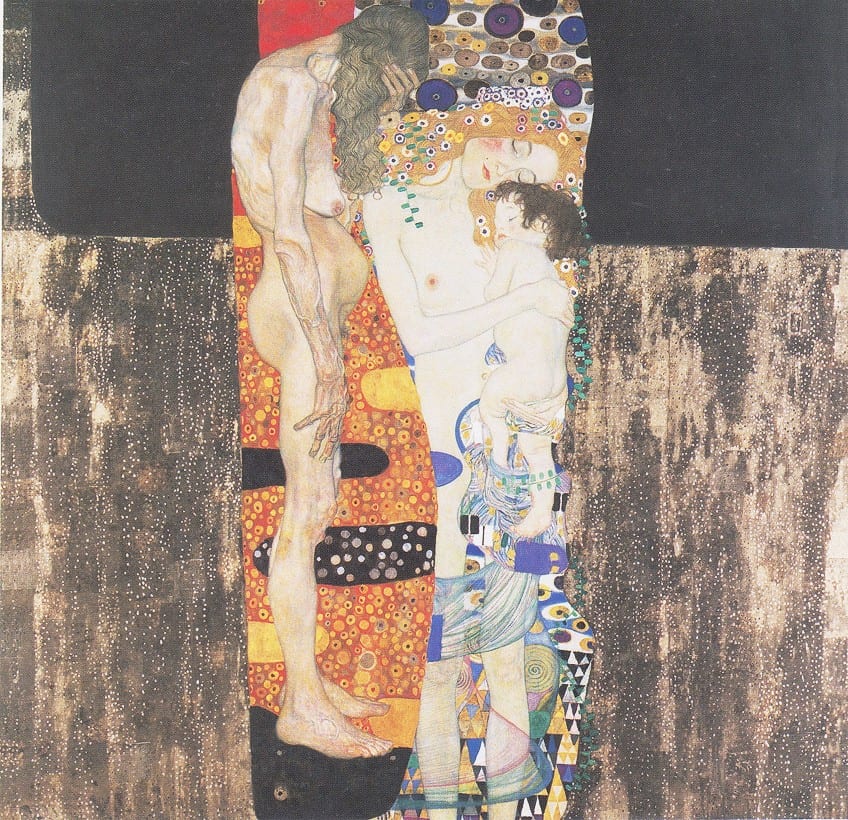
The square canvas represents the feminine life cycle and the unavoidable passage of time, from infancy through motherhood to old age. The three females serve as the piece’s main point, producing a column of color down the middle of an otherwise dark image. A young mother embraces her young daughter, both of whom appear to be asleep, while a nude older woman, her head lowered and her face obscured by her gray locks, stands to their immediate left.
The city of Rome is renowned for its incredibly beautiful artworks. It has been home to many famous Roman artists who have all contributed to the city’s beautification. While there are many sculptures to be found in outdoor spaces, Roman paintings can either be found in galleries, museums, or in the ceilings of various churches and buildings. We are lucky that so many of these works of art have been so well preserved so that generations and generations of people have been able to enjoy and admire them. With this list of famous paintings in Rome to guide you, finding art to see in Rome will hopefully prove easier for you!
Frequently Asked Questions
Where Can I View Rome’s Artwork?
Rome is an art and cultural treasure trove, and there are several sites to see art in the city. The Galleria Borghese houses a large collection of sculptures and paintings by famous painters like Bernini, Caravaggio, Raphael, and Titian. The National Museum of 21st Century Arts is a must-see for everyone interested in contemporary art and architecture since it houses a varied collection of modern artworks. The Palazzo Barberini Museum is an important collection of Renaissance and Baroque paintings, featuring pieces by famous artists such as Caravaggio and Raphael. The Museo Nazionale Romano museum has many locations around Rome, and has an enormous collection of ancient Roman mosaics, sculptures, and artifacts.
Why Is Rome’s Art Significant?
Rome has a long and varied history spanning two millennia. Its art spans several eras, including Ancient Rome, the Renaissance, Baroque, and later periods. Since antiquity, Rome has been a center of cultural creativity and patronage. Many Renaissance Roman artists went to Rome to explore classical art and architecture, which resulted in the resurgence of classical aesthetics. The city’s influence on the Renaissance, and succeeding art movements, influenced the development of Western art. Rome became an important place during the Renaissance era, attracting artists such as Michelangelo and Leonardo da Vinci. The city’s support and artistic climate enabled these geniuses to create some of art history’s most iconic works.
Isabella studied at the University of Cape Town in South Africa and graduated with a Bachelor of Arts majoring in English Literature & Language and Psychology. Throughout her undergraduate years, she took Art History as an additional subject and absolutely loved it. Building on from her art history knowledge that began in high school, art has always been a particular area of fascination for her. From learning about artworks previously unknown to her, or sharpening her existing understanding of specific works, the ability to continue learning within this interesting sphere excites her greatly.
Her focal points of interest in art history encompass profiling specific artists and art movements, as it is these areas where she is able to really dig deep into the rich narrative of the art world. Additionally, she particularly enjoys exploring the different artistic styles of the 20th century, as well as the important impact that female artists have had on the development of art history.
Learn more about Isabella Meyer and the Art in Context Team.
Cite this Article
Isabella, Meyer, “Famous Paintings in Rome – The Top 10 Iconic Roman Artworks.” Art in Context. August 17, 2023. URL: https://artincontext.org/famous-paintings-in-rome/
Meyer, I. (2023, 17 August). Famous Paintings in Rome – The Top 10 Iconic Roman Artworks. Art in Context. https://artincontext.org/famous-paintings-in-rome/
Meyer, Isabella. “Famous Paintings in Rome – The Top 10 Iconic Roman Artworks.” Art in Context, August 17, 2023. https://artincontext.org/famous-paintings-in-rome/.


